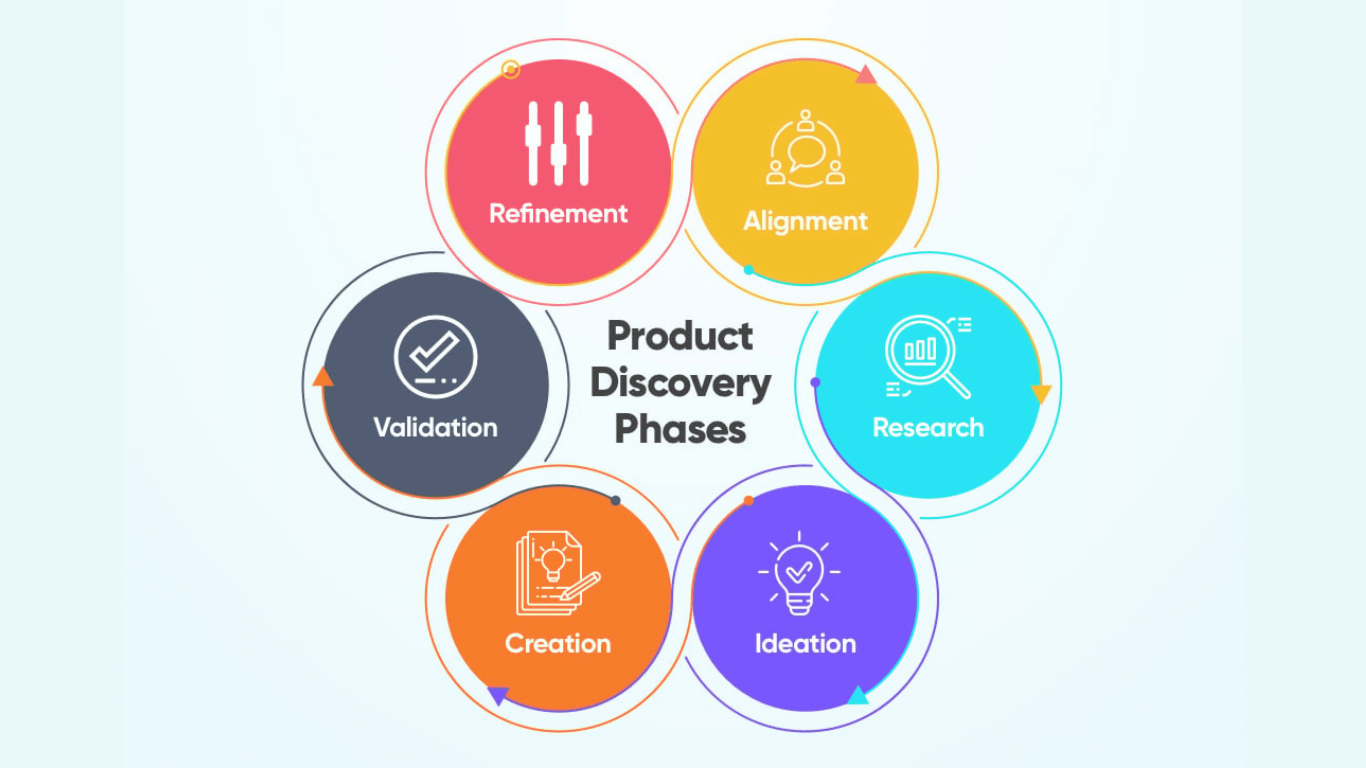Product discovery is a critical first step in developing an effective product strategy. Here are some key takeaways:
- It helps you identify market problems and customer needs to guide your product decisions.
- It involves research, competitor analysis, data analysis, prototyping, and testing assumptions.
- The process leads to a solid product vision based on real-world insights.
- Mastering the sets up your product for long-term success.
Understanding the Importance of Product Discovery
It is learning about your customers, market, and potential product opportunities. It comes before defining the details of your product strategy.
The goal is to identify real problems customers will pay to solve. This prevents wasting time and resources on product ideas that sound good but won’t gain traction.
Why is product discovery important?
- It aligns your product with your users’ needs.
- It validates that a target market exists for your product.
- It informs your positioning and guides pricing.
- It reveals how your product can compete in the market.
It reduces risk and sets you up for success before investing heavily in product development.
The Core Elements of an Effective Product Discovery Process
So what exactly does an effective process look like? Here are some of the core elements:
Customer research
- Interviews – Have in-depth conversations with existing and potential customers.
- Surveys – Use surveys to gauge interest, pricing sensitivity and feature preferences.
- Customer data analysis – Examine usage metrics and behavioral data if available.
Market research
- Competitor analysis – Study competing products and positioning. Look for gaps and opportunities.
- Market data research – Use tools like Google Trends to identify trends and demand.
- Pricing research – Understand competitors’ pricing models and customers’ willingness to pay.
Hypothesis testing
- Develop assumptions – Outline key assumptions about your product concept and customers.
- Design experiments – Create ways to test your assumptions, like minimal viable products.
- Validate or invalidate – Review results and refine your direction based on insights gained.
| Product discovery moves through three main phases: | Initial research Analysis and hypothesis development Testing and learning |
This process is iterative – plan to repeat steps as you gather insights and refine your product concept.
Best Practices for Mastering Product Discovery
How can you get the most out of product discovery? Here are some best practices:
Take an objective, data-driven approach
Avoid confirmation bias by letting data guide decisions instead of preconceived notions. Design tests to disprove assumptions.
Involve cross-functional collaboration
Online demand unites engineering, design, and marketing experts, enhancing insights through diverse perspectives and cross-departmental collaboration.
Identify the riskiest parts of your concept.
Focus on testing elements with the biggest knowledge gaps and assumptions built in.
Develop prototypes and experiments
Move beyond surveys and interviews by putting potential product concepts in front of customers.
Allocate sufficient time and resources
Rushing it can cause you to miss key insights, so budget appropriately.
Product Discovery Leads to Product Strategy
An excellent product discovery phase provides the knowledge you need to develop a winning product strategy.
You will identify where your solution fits in the market and how to position it for success. You can then confidently define your product strategy, MVP features, pricing models, and product discovery .
In essence, well-uted product discovery de-risks product development and sets you up to meet real market needs. Take the time upfront to master this invaluable process.
Frequently Asked Questions
What are some critical deliverables of product discovery?
Some typical deliverables include:
- A prioritized list of target customer segments
- Personas representing these segments
- An assessment of the competitive landscape
- Key insights into customer problems and needs
- A high-level product concept or strategy
- A product vision statement
- Hypotheses to test going forward
- Critical risks identified
How is product discovery different from product strategy?
It comes first and focuses on learning and assessing opportunity. This strategy defines your product direction and high-level plan to ute on insights gained during discovery.
How long should you spend on product discovery?
Most experts recommend dedicating 2-12 weeks to product discovery before moving forward with your MVP or product strategy. Complex products and new markets require longer discovery.
What skills are important for product discovery?
Essential skills include user empathy, asking good questions, analytics, critical thinking, synthesizing data, and collaboration. Strong communication skills are also key.
This covers the essentials of what it takes to master the art of product discovery. Let me know if you need any clarification or have additional questions!

